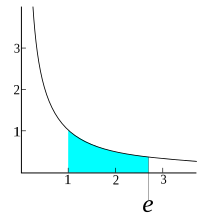
Epiproteome profiling of cadmium‐transformed human bronchial epithelial cells by quantitative histone post‐translational modification–enzyme‐linked immunosorbent assay
Sign Up to like & getrecommendations! Published in 2018 at "Journal of Applied Toxicology"
DOI: 10.1002/jat.3597
Abstract: Cadmium (Cd), a carcinogenic toxic metal, is pervasively distributed in the soil, water and air. Chronic exposure to Cd has been correlated to lung disease development including cancers. Although many studies have been conducted to… read more here.
Keywords: post translational; epiproteome profiling; cadmium; histone post ... See more keywords

Toxicity of iron nanoparticles towards primary cultures of human bronchial epithelial cells
Sign Up to like & getrecommendations! Published in 2020 at "Journal of Applied Toxicology"
DOI: 10.1002/jat.4033
Abstract: Air pollution is a public health issue and the toxicity of ambient particulate matter (PM) is well‐recognized. Although it does not mostly contribute to the total mass of PM, increasing evidence indicates that the ultrafine… read more here.
Keywords: epithelial cells; toxicity iron; toxicity; bronchial epithelial ... See more keywords

Evaluation of chronic cigarette smoke exposure in human bronchial epithelial cultures
Sign Up to like & getrecommendations! Published in 2023 at "Journal of Applied Toxicology"
DOI: 10.1002/jat.4430
Abstract: Cigarette smoke (CS) exposure induces both cytotoxicity and inflammation, and often causes COPD, a growing cause of morbidity and mortality. CS also inhibits the CFTR Cl‐ channel, leading to airway surface liquid dehydration, which is… read more here.
Keywords: exposure; cigarette smoke; bronchial epithelial; epithelial cultures ... See more keywords

The toxicity of cooking oil fumes on human bronchial epithelial cells through ROS‐mediated MAPK, NF‐κB signaling pathways and NLRP3 inflammasome
Sign Up to like & getrecommendations! Published in 2022 at "Environmental Toxicology"
DOI: 10.1002/tox.23465
Abstract: Cooking oil fumes (COFs) are the main pollutants in kitchen and indoor air, which threaten human health. Exposure to COFs may lead to respiratory diseases and impair pulmonary function. To investigate the toxicity of COFs… read more here.
Keywords: mapk signaling; cooking oil; toxicity; human bronchial ... See more keywords

Genotoxicity testing of different surface-functionalized SiO2, ZrO2 and silver nanomaterials in 3D human bronchial models
Sign Up to like & getrecommendations! Published in 2017 at "Archives of Toxicology"
DOI: 10.1007/s00204-017-2015-9
Abstract: Inhalation is considered a critical uptake route for NMs, demanding for sound toxicity testing using relevant test systems. This study investigates cytotoxicity and genotoxicity in EpiAirway™ 3D human bronchial models using 16 well-characterized NMs, including… read more here.
Keywords: genotoxicity; bronchial models; surface functionalized; human bronchial ... See more keywords

Ubiquitin carboxyl-terminal hydrolase isozyme L1/UCHL1 suppresses epithelial-mesenchymal transition and is under-expressed in cadmium-transformed human bronchial epithelial cells.
Sign Up to like & getrecommendations! Published in 2020 at "Cell biology and toxicology"
DOI: 10.1007/s10565-020-09560-2
Abstract: Cadmium (Cd), a highly toxic heavy metal, is widespreadly distributed in the environment. Chronic exposure to Cd is associated with the development of several diseases including cancers. Over the decade, many researches have been carried… read more here.
Keywords: epithelial cells; mesenchymal transition; transition; bronchial epithelial ... See more keywords

Fungal β-Glucan Activates the NLRP3 Inflammasome in Human Bronchial Epithelial Cells Through ROS Production
Sign Up to like & getrecommendations! Published in 2017 at "Inflammation"
DOI: 10.1007/s10753-017-0674-6
Abstract: The nucleotide-binding domain and leucine-rich repeat protein 3 (NLRP3) inflammasome has developed as an important bridge between innate immune and infection recently, and has the ability to drive proteolytic procaspase-1 into bioactive caspase-1, then responsible… read more here.
Keywords: epithelial cells; fungal glucan; bronchial epithelial; human bronchial ... See more keywords

Cryptococcus neoformans in Association with Dermatophagoides pteronyssinus has Pro- (IL-6/STAT3 Overproduction) and Anti-inflammatory (CCL2/ERK1/2 Downregulation) Effects on Human Bronchial Epithelial Cells
Sign Up to like & getrecommendations! Published in 2022 at "Inflammation"
DOI: 10.1007/s10753-021-01619-4
Abstract: Cryptococcosis (caused, for example, by Cryptococcus neoformans ) and allergic asthma (caused, for example, by Dermatophagoides pteronyssinus ) target the respiratory tract (the lung and bronchial epithelium). C. neoformans and D. pteronyssinus can coexist in… read more here.
Keywords: dermatophagoides pteronyssinus; human bronchial; cryptococcus neoformans; ccl2 ... See more keywords

AMPK alleviates endoplasmic reticulum stress by inducing the ER-chaperone ORP150 via FOXO1 to protect human bronchial cells from apoptosis.
Sign Up to like & getrecommendations! Published in 2018 at "Biochemical and biophysical research communications"
DOI: 10.1016/j.bbrc.2018.02.095
Abstract: Chronic obstructive pulmonary disease (COPD), is characterized by inflammation of airways accompanied by a progressive destruction of lung parenchyma. This process is initiated in most cases by cigarette smoking. In this study we investigated the… read more here.
Keywords: endoplasmic reticulum; apoptosis; reticulum stress; ampk ... See more keywords

Porphyromonas gingivalis Mfa1 fimbria putatively binds to TLR2 and induces both IL-6 and IL-8 production in human bronchial epithelial cells.
Sign Up to like & getrecommendations! Published in 2021 at "Biochemical and biophysical research communications"
DOI: 10.1016/j.bbrc.2021.12.003
Abstract: Porphyromonas gingivalis (Pg) a major periodontal pathogen involved in periodontal disease development and progression. Moreover, Pg has two fimbriae surface proteins (FimA and Mfa1) that are genetically distinct and make-up the fimbrial shaft which in-turn… read more here.
Keywords: functional response; porphyromonas gingivalis; human bronchial; bronchial epithelial ... See more keywords

ALKBH5 promotes cadmium-induced transformation of human bronchial epithelial cells by regulating PTEN expression in an m6A-dependent manner.
Sign Up to like & getrecommendations! Published in 2021 at "Ecotoxicology and environmental safety"
DOI: 10.1016/j.ecoenv.2021.112686
Abstract: Cadmium is a carcinogenic heavy metal that poses a severe threat to human beings. The underlying mechanism, however, remains elusive. N6-methyladenosine (m6A) is the most abundant post-transcriptional modification in mRNA that regulates RNA metabolism. Emerging… read more here.
Keywords: cadmium induced; m6a; transformation; bronchial epithelial ... See more keywords